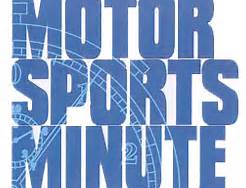Daytona 500 Should Be Memorable
- Updated: February 10, 2012
The pre-season testing and media tour hype is in the books and it’s about time for the NASCAR Sprint Cup teams and drivers to make their way to Daytona for the dawn of yet another season. And coming off last season’s unbelievable championship finish in Homestead, the season opening Daytona 500 is shaping up to be one of the most unpredictable events in recent memory.
Just how hard is it to handicap the “Super Bowl of stock car racing”? The odds makers in Las Vegas have listed eight drivers as favorites at 12-1, providing proof of just how much of a toss-up this race is. It’s relatively easy to come up with at least one legitimate reason why nearly every driver in the starting lineup will wind up in victory lane. And yet, among the unknowns regarding new fuel injection technology and the many driver and crew chief changes, one thing remains almost certain; the winner will come as a result of a correctly-timed two-car tandem draft.
NASCAR, listening to a majority of the fans, has implemented new regulations this season designed to reduce the amount of time two cars can run together in a draft without overheating, with the clear goal of severely limiting tandem racing while not completely eliminating it. While the intentions are well meaning, two car drafting is here to stay and will most likely play a part in the finish simply for the fact that the strategy is now ingrained deep in the driver’s minds. Mark Martin was spot-on when he was quoted last month as stating it was hard for drivers to unlearn something that has been proven to gain as much as 10mph. When racers find something that provides an advantage, it’s extremely difficult not to try to use it barring any severe sanctions such as when they were forced to “unlearn” racing below the yellow inside lines at the restrictor plate tracks. In that instance, drivers were penalized for advancing their positions by racing below the objectively defined lines and the “out of bounds” boundaries were quickly established. Tandem racing, much like bump drafting, is an entirely subjective matter and any attempts at doling out penalties for it during a race have failed historically.
On paper, the statistic sheets show that tandem racing provides for a more competitive event, with multiple on-track passes and an increased number of lead changes. Because two cars drafting together are significantly faster than cars racing in a pack, everyone needs a partner, thus making the smaller teams suddenly more relevant and competitive. Much like the salary cap in the NFL prevents teams from simply buying all the good players, tandem racing in NASCAR prevents the so called super power teams from simply lining up and leaving the smaller teams out to dry. The new limiting regulations in place for this year should increase the competitiveness as the element of timing is brought into the equation. Two drivers will now have to hook up at the precise moment to use the strategy to get to the front before they experience the overheating issues which could threaten to end their race all together. It’s kind of like NASCAR’s version of the “push to pass” boost the open wheel series utilized a few years ago, only in this case, it takes two cars to make it happen.
With all that said, the final laps of the Daytona 500 should come down to which two drivers can lock together at the right moment to propel themselves to the front and possibly the win in the “Great American Race.” With communications between the drivers also banned this season, experience, car-control and driving talent come into play as well. The main question to be answered is what drivers have the skill and ability to work together to become major players in the outcome of the 500.
Penske teammates Brad Keselowski and A.J. Allmendinger were fast in testing and appeared to work very well together. Likewise Kurt Busch and Regan Smith have a history of drafting together at Daytona and could surprise some people. Hendrick Motorsports teammates Jimmie Johnson and Dale Earnhardt Jr. enjoyed success at Talladega last year while Kasey Kahne could benefit from working with Jeff Gordon. Unless Gordon opts to forgive and forget and attempts to renew his success found last year working with defending 500 champion Trevor Bayne.
Roush-Fenway drivers Carl Edwards and Greg Biffle paired up on the plate tracks last year and Matt Kenseth should be OK with having to work with rookie Ricky Stenhouse, who replaced last year’s drafting partner David Ragan. 2011 Childress Racing teammates Jeff Burton and Clint Bowyer challenged on the final lap of both Talladega races last season but with Bowyer now driving for Michael Waltrip Racing it will be interesting to see if they find each other on the track this year. Finally, Danica Patrick arrives at the 500 under an immense spotlight and brings with her a drafting partner commitment from none other than Sprint Cup Champion Tony Stewart. The two have a limited history of racing together at the front of the pack in the Nationwide Series race at Daytona last summer and if they can overcome Patrick’s limited experience in the Sprint Cup cars and stay out of trouble early, could find themselves in the mix when the checkered flag falls.
The Daytona 500 is a little more than two weeks away and the anticipation is beginning to ramp up for the new season. While it will be hard to top last year’s upset win for Trevor Bayne and the Wood Brothers, the new regulations and the unknowns they bring with them, have the potential for this year’s edition to be just as memorable.




![Porsche Fabcar crosses the finish line. [Robert Madara photo]](https://racingnation.com/wp-content/uploads/2023/11/FabcarFinish-108x70.jpeg)

![USF2000 Pro driver Lindsay Brewer. [Eddie LePine Photo]](https://racingnation.com/wp-content/uploads/2023/06/IMG_8825_2-108x70.jpg)